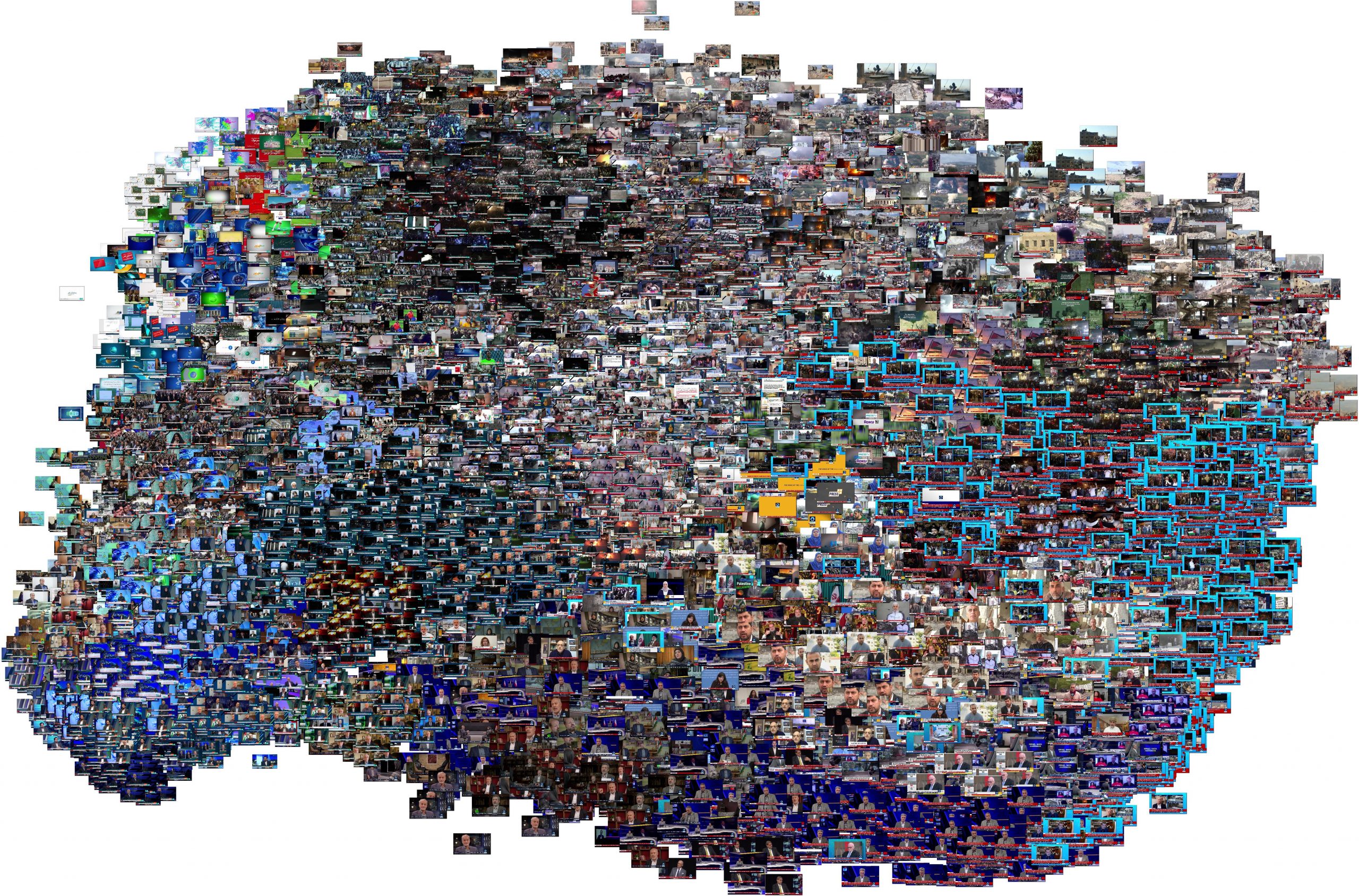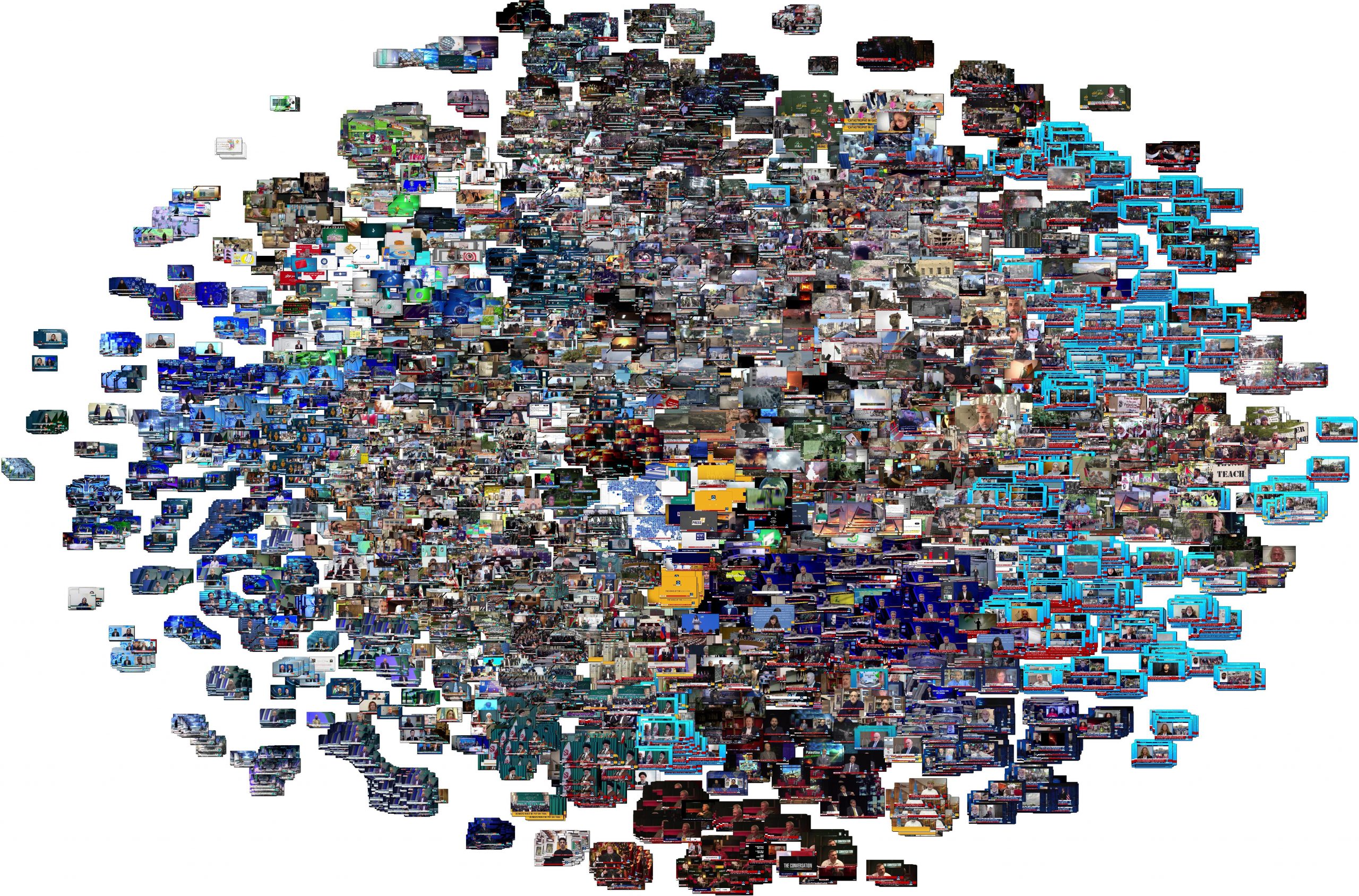
One of the most existential questions lying at the very heart of public interest international media scholarship is the question of whether nations that exert greater state control over their media systems present different narrative environments to their domestic and international audiences, covering different stories and in different ways. In other words, is the image of global events presented to their citizenry the same as the one they present to a global audience? Earlier this week we visualized the narrative landscape of an entire day of Iranian television news through two channels: the domestically-focused Persian-language IRINN and the internationally-focused English-language Press TV. In both cases we extracted one frame every 4 seconds throughout an entire day of coverage (October 17, 2023 in UTC time) and used GCP's Vertex AI Multimodal Embedding model to construct multimodal embedding representations of each frame that we then visualized using PCA and t-SNE approaches (full code is available). What would it look like to generate a combined visual that examines how similar or disjoint the two channels' coverage was that day?
The two images below visualize the combined narrative space of the full 24 hours of coverage of IRINN and Press TV on October 17th, 2023. Immediately clear is that the PCA visualization (which examines global-scale structure) yields a single diffuse blend of the two channels. Press TV coverage appears on the right half and IRINN coverage on the left, but the overall imagery and thematic presentation is extremely similar across the two channels such that if you ignore the logo in the lower-right of each frame and the language of the onscreen text, it is difficult to identify many major differences between the two other than the minor technological difference of Press TV's split-screen layout compared with IRINN's. Overall, the imagery is extremely similar, suggesting a fairly unified visual narrative landscape. One intriguing difference is that Press TV coverage appears to feature more kinetic imagery of buildings being destroyed in Gaza, whereas IRINN coverage appears to feature more imagery of protests and reaction to those airstrikes. Further work is required to see if this trend is legitimate and if it holds over a longer period of time, as that would suggest an interesting "dual worlds" narrative of a focus on destruction versus reaction to it and why the government might wish to show less kinetic and more reactive imagery.
PCA
t-SNE

